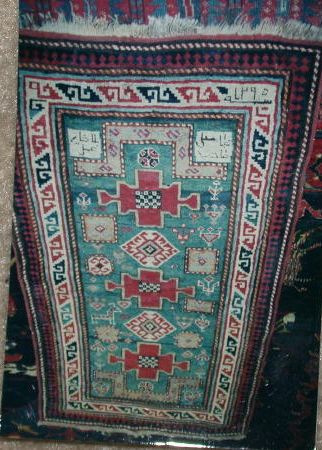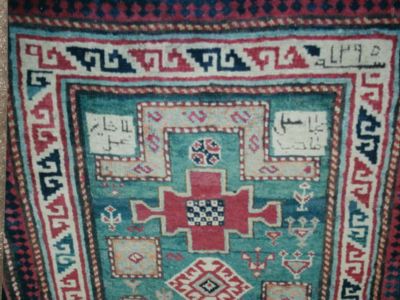

Double niche Karachop small rug (about 2 feet x 4 feet).
Dated 1290 which is about 1879.
Could someone please translate the Arabic?
Kelvin Webb
Exception that proves the rule ??


Double niche Karachop small rug
(about 2 feet x 4 feet).
Dated 1290 which is about 1879.
Could someone
please translate the Arabic?
Kelvin Webb
Hi Kelly -
Do you have a way of giving us a very close look at the
calligraphy only?
It may be hard to read, even for someone who can read
the language in which it is written?
Thanks,
R. John Howe
arabic
John,
The rug is in cold storage. Some colleagues(Arabic speaking)
told
me it was difficult to translate(not correct Arabic) but the
content
was religious and possibly prayer related.
Kelly
Hi Kelvin,
Iím told here that this is not Arabic - I mean, the
alphabet is Arabic, the language is not. Someone suggests Farsi but I think this
must be one of the many Caucasian languages/dialects.
I quote an
interesting article "MUSLIM NATIONALISM IN THE POST-SOVIET CAUCASUS: THE
DAGESTANI CASE" from a website called "Caucasian Regional
Studies":
The patois of ethnic minorities have no alphabet and cannot
be used in written form. As for the 'national' tongues, all of them have a
unified script: Arabic, used before the revolution (the so-called 'Ajam script'
in the Mountains, 'Turki' in the Lowlands and the Foothills) was changed into
Latin between 1928 and 1937, and then into a modified Cyrillic alphabet in
1937.
Best regards,
Filiberto